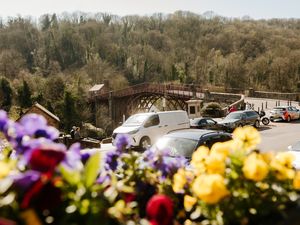Ironbridge cooling towers: The explosive plans to bring down an icon - in pictures
Iain Thomson says it is a demolition job unlike any other he has had cause to deal with.
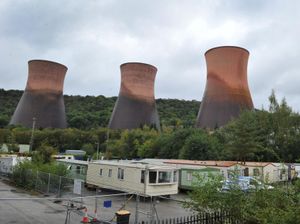
"There are four cooling towers, each 120 metres high, so that's half a kilometre we're bringing down," says the head of communications for Harworth, the company which is redeveloping the former Ironbridge Power Station.
The cost of the demolition work is similarly stratospheric. Mr Thomson can't be too specific, but it will be in excess of £10 million.
"The costs of the demolition far exceed the cost of acquisition," he says.
About 100 workers are employed on the site, including 80 workers from contractor Demolition Services Ltd which has been taken to develop the site.
The giant, terracotta-tinted towers beside the River Seven, a familiar sight for half a century, will not be around for much longer. For the past six months, demolition contractors have been working feverishly to remove the massive infrastructure at the Buildwas site.
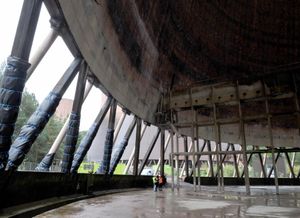
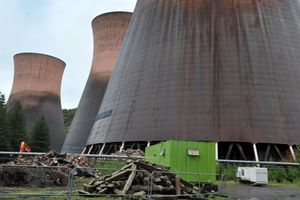
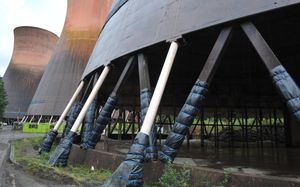

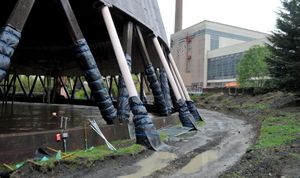
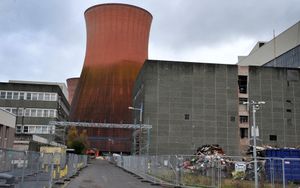

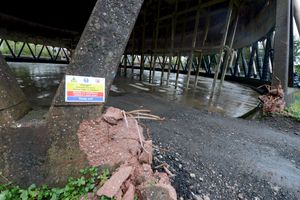
Up until now, the work has gone largely unnoticed by people living around the site, but that is likely to change towards the end of the year, when the four giant towers come crashing to the ground.
You don't really get a feel for the scale of the towers until you stand underneath them. In Tower No. 1, the hundreds of concrete posts and layers of asbestos sheeting which formed the base of the tower have all been removed, leaving nothing more than a narrow bridge running through the centre. Looking up to the sky, it resembles standing in the middle of a giant toilet roll.
A small hole, about the size of a large television screen is visible inside the vast concrete wall. This, along with a break in one of the 'legs' that holds the tower off the ground is the only tell-tale sign of one of the test explosions which has been carried out to calculate the quantity of explosives that will be required.
Detailed plans as to how this will be carried are still to be agreed with the local council, but the principle is quite simple: explosive charges will be planted on a black ring close to the bottom of each tower, each with sufficient power to blow away the metal-framed legs which hold the tower up.
"The charges will only be placed two-thirds of the way round, that way we can control which way it will fall," says Mr Thomson.
People living near to the site were originally to be given just 48 hours notice of the demolition, to minimise the risk from people travelling to watch the spectacle take place.
But after listening to residents' concerns, Mr Thomson said they would now be told a week in advance of the process.
When the towers come down, a fifth-of-a-mile exclusion zone will be imposed around the site, and Mr Thomson says strenuous efforts will be made to minimise the amount of dust produced.
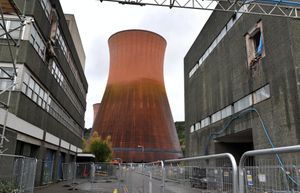
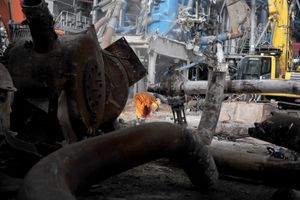
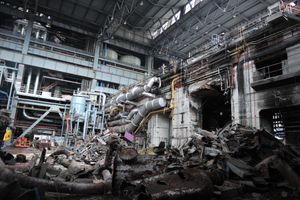
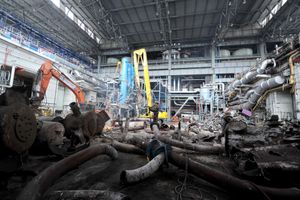
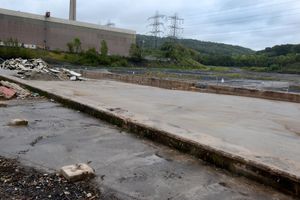
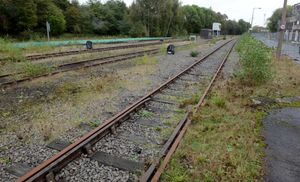
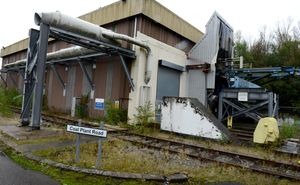
In the meantime, though there is still plenty of other work to do around the plant.
The vast turbine hall, where large steam-powered generators turned vapour into electricity, now resembles a scrapyard.
Pipework, about 2ft in diameter made from one-inch thick steel to cope with the vast steam pressure, lies unceremoniously on the floor, having been cut away from the complex labyrinth of plumbing which once filled the building.
Bit by bit, the machinery is removed, the massive metal casting left lying on the floor as they wait to be recycled. Concrete is fed through a series of crushing machines, to be turned into aggregate for the building trade.
Between the turbine hall and the former fuel store lies a mound of electrical cable which will be sent for recycling.
"We have a target that 98 per cent of the materials from the site will be recycled," says Mr Thomson.
"Asbestos has to go to landfill, but everything else we try to recycle."
That includes office fittings and fixtures – old chairs and desks abandoned by the former operator E.On are stripped for metal, for example.
Disposing of 4,000 tons of asbestos is no small is no small feat, either, but Mr Thomson says as an extra precaution a representative of the company will accompany the material when it is taken to landfill to ensure it is dealt with correctly.
"We don't have to do that, as long as we have got a certificate to say it has been disposed of correctly then we are compliant, but it is good practice," he says.
Adam Wilson, health, safety and environmental manager for Demolition Services, says entering the offices three years after the site has been mothballed can be a haunting experience.
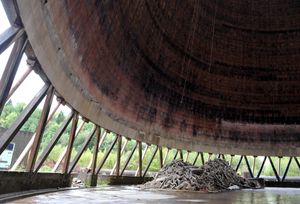
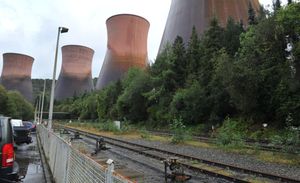
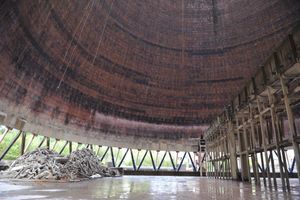
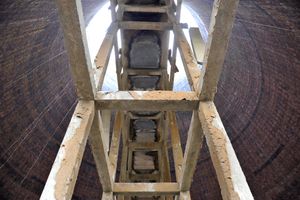
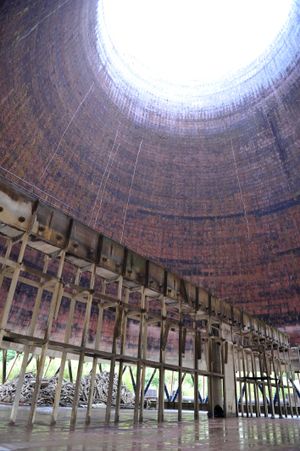
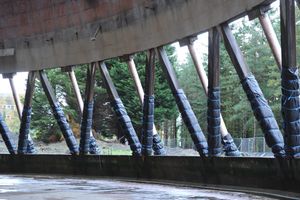

"Many of the desks are exactly as they were left when people walked out of the building for the last time," he says.
"There might be a dirty mug on the desk, there are photographs on the walls, there might be a copy of Angler's Weekly that Dave was reading on his last day at work."
The site's location, surrounded by countryside and next to a World Heritage site, means special consideration has to be given to wildlife.
"Newts are one of the most expensive items in any demolition," says Mr Thomson, estimating the cost of relocating them in suitable habitats at £30,000 per newt.
Long gone is the fuel store, one of the last buildings to be erected on the site and one of the first to be demolished. The store was built after he station was converted to run on biomass in 2012, and was used to keep the wood-pellets dry.
But while the towers will soon be gone, it is just the beginning of the massive reclamation job, which is expected to continue until September 2021. The redevelopment of the site, which could include 1,000 new homes as well as industrial development, is expected to run for a decade.
Mr Wilson, a 37-year-old father-of-two who lives in Broseley, feels honoured to be working on such an important development.
"It is a privilege to working on something that means so much to the people around here," he says.



